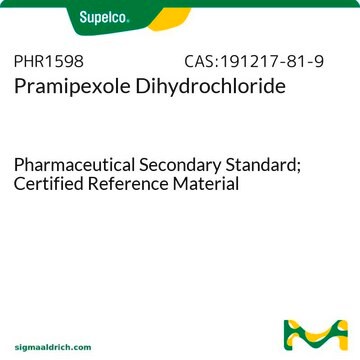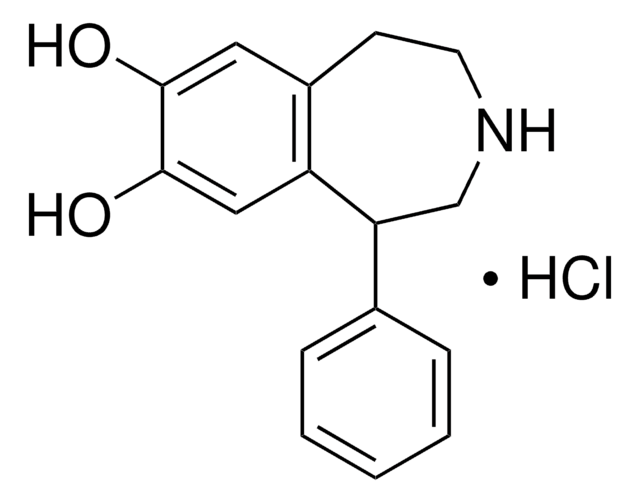A1237
Pramipexole dihydrochloride
>98% (HPLC), powder
Synonim(y):
(S)-2-amino-4,5,6,7-tetrahydro-6-(propylamino)benzothiazole dihydrochloride, PPX dihydrochloride
About This Item
Polecane produkty
Próba
>98% (HPLC)
Postać
powder
warunki przechowywania
desiccated
kolor
white to off-white
rozpuszczalność
H2O: >20 mg/mL
inicjator
Boehringer Ingelheim
temp. przechowywania
2-8°C
ciąg SMILES
Cl.Cl.CCCN[C@H]1CCc2nc(N)sc2C1
InChI
1S/C10H17N3S.2ClH/c1-2-5-12-7-3-4-8-9(6-7)14-10(11)13-8;;/h7,12H,2-6H2,1H3,(H2,11,13);2*1H/t7-;;/m0../s1
Klucz InChI
QMNWXHSYPXQFSK-KLXURFKVSA-N
informacje o genach
human ... DRD2(1813) , DRD3(1814) , DRD4(1815)
Opis ogólny
Zastosowanie
Działania biochem./fizjol.
Cechy i korzyści
Hasło ostrzegawcze
Warning
Zwroty wskazujące rodzaj zagrożenia
Zwroty wskazujące środki ostrożności
Klasyfikacja zagrożeń
Acute Tox. 4 Oral - STOT SE 3
Organy docelowe
Central nervous system
Kod klasy składowania
11 - Combustible Solids
Klasa zagrożenia wodnego (WGK)
WGK 2
Temperatura zapłonu (°F)
Not applicable
Temperatura zapłonu (°C)
Not applicable
Certyfikaty analizy (CoA)
Poszukaj Certyfikaty analizy (CoA), wpisując numer partii/serii produktów. Numery serii i partii można znaleźć na etykiecie produktu po słowach „seria” lub „partia”.
Masz już ten produkt?
Dokumenty związane z niedawno zakupionymi produktami zostały zamieszczone w Bibliotece dokumentów.
Klienci oglądali również te produkty
Produkty
We offer many products related to dopamine receptors for your research needs.
Discover Bioactive Small Molecules for ADME/Tox
Nasz zespół naukowców ma doświadczenie we wszystkich obszarach badań, w tym w naukach przyrodniczych, materiałoznawstwie, syntezie chemicznej, chromatografii, analityce i wielu innych dziedzinach.
Skontaktuj się z zespołem ds. pomocy technicznej















